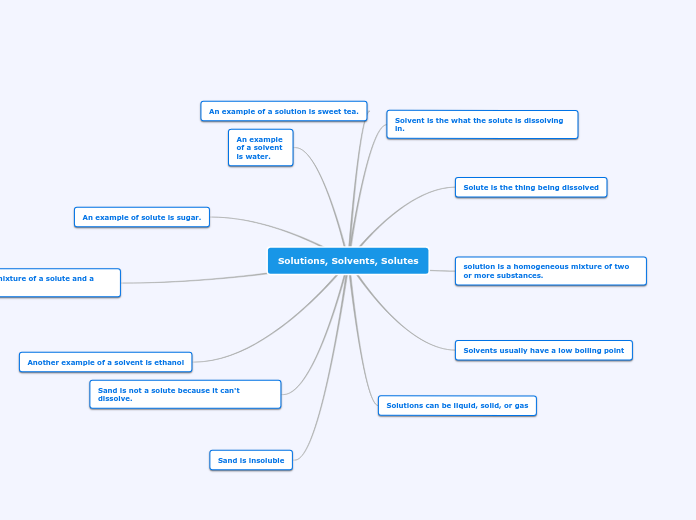Quadratic Relations
Quadratic Equations
Solutions
Quadratic formula
X-coordinate of the vertex of a parabola is -b/2a and the equation of the axis of symmetry is x=-b/2a
When x-intercepts and one other point are known
Substitute into the y= a(x-r)(x-s) formula
To find an equation that represents the relation
Write equation in standard form and then factor the left side
Set each factor equal to zero and solve for the unknown
Completing the square
Allows you to find the min or max point of a quadratic relation of the form y= ax^2 + bx + c algebraically
Expressions
Special Products
Sum and the difference of two terms
When you multiply the sum and the difference of two terms, the two middle terms are opposites so they add to zero, so you just multiply the rest.
Perfect squares
When squaring a binomial, you add the two equal middle terms after expansion and square the rest.
Polynomials
Factoring
Perfect Square Trinomial
Factor using this formula: a^2 + 2ab + b^2
Difference of Squares
Factor using this formula: a^2 - b^2 = (a + b) (a - b)
Quadratic expression
ax^2 + bx + c
Find two integers whose product is a * c and whose sum is b. Then break up the middle term and factor by grouping
x^2 + bx + c
First find two integers, whose product of c is the sum to b
Grouping
Factor groups of two terms with a common factor to produce a binomial common factor.
Find the GCF of the Polynomial
First find the GCF of the coefficients and then the GCF of the variable parts
Remove the GCF as the first factor, and then divide each term by the GCF to find the second factor
Model as a binomial product
Expand and Simplify
Use the Distributive Property
Parabola
Properties
Opening
Downward
"a" value is negative
Maximum value
Upward
"a" value is positive
Minimum value
y=a(x-h)^2 + k
How to find
Y-Intercept
Make the x-value as 0
X-Intercept
There are 2 x-intercepts
Can be either positive or negative
Make the y-value as 0
Transformations
"a" value stretch or compress the graph vertically by a factor of a
-1
a>1 or a<-1 = graph is stretched vertically (narrows)
a<0 = reflected in the x-axis
"h" value translated the graph horizontally
h<0 = translated to the left
h>0 = translated to the right
"k" value translates the graph vertically
k<0 = translated downward
k>0 = translated upward
How to draw
Values x may take
Any set of real numbers
Values y may take
If a < 0 then y is less than or equal to k
If a > 0 then y is greater than or equal to k
minimum of 7 points
Use the step method
1a, 3a, 5a
Graph of a quadratic relation, which is U-shaped and symmetrical
Getting Ready for Quadratics
Simplifying Algebraic Expressions
Rewrite the expression
Collect like terms
Distributive Property
Find GCF
Simplifying Radicals
Perfect square GCF
Seperate radicals
Exponent Laws
Negative exponents
Negative reciprocal
Power of a fraction
Power of a porduct
Power outside the bracket
Multiply exponents
Dividing
Subtract exponents
Multiplying
Add exponents
y=x^2
Key Terms
Root (of an equation)
The same as the solution of an equation
The value of the varibale that makes an equation true
Quadratic Equation
An equation in the form ax^2 + bx + c = 0, where a, b, and c are real numbers and a can't equal 0.
Completing the Square
A process for expressing y= ax^2 + bx + c in the form y= a(x-h)^2 + k
Quadratic Expression
A second-degree polynomial
GCF (Greatest Common Factor)
The greatest factor that divides two numbers
Perfect square Trinomial
A trinomial of the form a^2 + 2ab + b^2 or a^2 - 2ab - b^2 that is the result of squaring a binomial
Mirror Point
Point in which the points of one side of the parabola was reflected
Congruent
Equal in size and shape
Dependent Variable
Variable that relies on the other
Independent Variable
Variable that does not rely on the other
Finite Differences
Differences found from the y-values in tables with evenly spaced x-values
Using a table of values chart
Second differences are constant
Vertex
Point on a parabola where the curve changes direction (can either have a max or min value depending on opening)
The (x,y) coordinates of the vertex are the (h,k) values in the vertex equation
Quadratic Relation
A relation whose equation is in the form y=ax^2 + bx + c
Axis of Symmetry
Line that divides a figure into 2 congruent parts
Goes through the vertex
Non-Linear Relationship
A relationship between 2 variables that does not follow a straight line when graphed
Curve of best fit
Smooth curve drawn to approximate the general path or trend in a scatter plot









